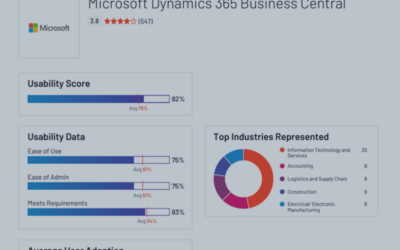Is your organization considering an ERP software implementation, or have you recently completed one? If so, you’re likely aware that measuring the success of such a project with KPIs for ERP implementation is critical to ensuring its value and return on investment. But have you considered using a wide variety of key performance indicators (KPIs) to assess the project’s success? Monitoring a diverse set of ERP performance metrics can help you to gain a more comprehensive view of your ERP system’s performance and identify areas for improvement.
In this blog, we’ll explore why using a wide range of KPIs is critical for measuring the success of an ERP project and explain how to measure success of ERP implementation with the right mix of metrics, across a variety of categories such as customer satisfaction, finance, IT, employee satisfaction, and business processes.
Why measuring your project success with the right ERP KPIs is crucial.
Using a variety of key performance indicators (KPIs) to measure the success of an ERP project is critical because it allows you to assess the project’s success from multiple angles. This approach helps to ensure that the project is delivering value across all aspects of the organization.
Also, of equal importance, by monitoring a diverse set of KPIs, businesses can identify areas where the ERP system is performing well and where improvements can be made. This enables companies to refine their ERP implementation and optimize its performance, ultimately leading to greater overall success.
What key performance indicators can you look for to show success? Great question! The following are some KPIs for ERP implementation.
ERP KPI examples
Customer Satisfaction
- Time to resolution of customer issues
- Number of customer complaints
- Customer retention rate
In other words: How are your customers responding to the change? Are conversions increasing? Have you seen a decrease in complaints or an increase in positive reviews? By facilitating more efficient inventory management and billing, an ERP can have a great impact on your customer’s experience.
Finance
- Return on investment (ROI)
- Cost savings achieved through the ERP system
- Percentage increase in revenue or profits
- Revenue growth
- Project margins
In other words: One KPI for ERP implementation is also the most important metric at any business—revenue. Look to the bottom line: is revenue going up? Are operational costs going down? If so, this is one of the strongest indicators that your new ERP is paying off.
IT Costs
- System uptime and availability
- Number of system errors or glitches
- Time to resolve system issues
In other words: Do you have an internal Information Technology (IT) department that’s responsible for maintaining, troubleshooting and managing your IT infrastructure and systems? If so, chances are they spend a lot of time dealing with user questions and issues. Whether these are caused by inefficient tools, problems with interdepartmental collaboration, or general discomfort with technology, they can leave IT cleaning up a lot of small messes. The right ERP well implemented should eliminate much of this, freeing up IT for other projects and reducing costs.
Employee Satisfaction
- Employee engagement and productivity
- Employee turnover rate
- Employee satisfaction survey results
In other words: How pleased are your employees with the solution? Do they feel their work is now easier or harder? How quick was adoption? Is any department or employee holding on to the old way of doing things because they just can’t seem to make the ERP work for their needs? Answering these questions around your employee experience with an ERP solution can provide a good deal of clarity on its success.
Business Processes and Timelines
- Cycle time for key business processes
- Percentage reduction in errors or defects
- Inventory turnover
- Number of process improvements made as a result of the ERP system
In other words: Are your processes better able to align with your business goals? Are project timelines holding or even shrinking? An ERP should streamline business processes. And, as a result, make not only the tangible product your company creates better, but your intellectual product stronger, too. An ERP can have a sizeable impact on a company, increasing revenue, while enhancing both customer and employee satisfaction. Have you recently implemented a new ERP? What key KPIs for ERP implementation did you use to measure success? Let us know in the comments below. If you would like to see what ERP can do for your company, start exploring options today




